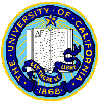 |
Scott Jordan | |
|
|
Definitions of Personally Identifiable Information
The computer science literature on identification of people using personal information paints a wide spectrum, from aggregate information that doesn't contain information about individual people, to information that itself identifies a person. However, privacy laws and regulations often distinguish between only two types, often called personally identifiable information and de-identified information. We show that the collapse of this technological spectrum of identifiability into only two legal definitions results in the failure to encourage privacy-preserving practices. We propose a set of legal definitions that spans the spectrum.
We start with anonymous information. Computer science has created anonymization algorithms, including differential privacy, that provide mathematical guarantees that a person cannot be identified. Although the California Consumer Privacy Act (CCPA) defines aggregate information, it treats aggregate information the same as de-identified information. We propose a definition of anonymous information based on the technological possibility of logical association of the information with other information. We argue for the exclusion of anonymous information from notice and consent requirements.
We next consider de-identified information. Computer science has created de-identification algorithms, including generalization, that minimize (but not eliminate) the risk of re-identification. GDPR defines anonymous information but not de-identified information, and CCPA defines de-identified information but not anonymous information. The definitions do not align. We propose a definition of de-identified information based on the reasonableness of association with other information. We propose legal controls to protect against re-identification. We argue for the inclusion of de-identified information in notice requirements, but the exclusion of de-identified information from choice requirements.
We next address the distinction between trackable and non-trackable information. Computer science has shown how one-time identifiers can be used to protect reasonably linkable information from being tracked over time. Although both GDPR and CCPA discuss profiling, neither formally defines it as a form of personal information, and thus both fail to adequately protect against it. We propose definitions of trackable information and non-trackable information based on the likelihood of association with information from other contexts. We propose a set of legal controls to protect against tracking. We argue for requiring stronger forms of user choice for trackable information, which will encourage the use of non-trackable information.
Finally, we address the distinction between pseudonymous and reasonably identifiable information. Computer science has shown how pseudonyms can be used to reduce identification. Neither GDPR nor CCPA makes a distinction between pseudonymous and reasonable identifiable information. We propose definitions based on the reasonableness of identifiability of the information, and we propose a set of legal controls to protect against identification. We argue for requiring stronger forms of user choice for reasonably identifiable information, which will encourage the use of pseudonymous information. Our definitions of anonymous information, de-identified information, non-trackable information, trackable information, and reasonably identifiable information can replace the over-simplified distinction between personally identifiable information versus de-identified information. We hope that this full spectrum of definitions can be used in a comprehensive privacy law to tailor notice and consent requirements to the characteristics of each type of information.
Aligning Legal Definitions of Personal Information with the Computer Science of Identifiability , Research Conference on Communication, Information and Internet Policy (TPRC), Washington, D.C, September 2021.
Portions of this work were supported by the Herman P. & Sophia Taubman Foundation and by NSF. Any opinions, findings, conclusions or recommendations expressed in this material are those of the author(s) and do not necessarily reflect the views of the National Science Foundation or IEEE. This material is presented to ensure timely dissemination of scholarly and technical work. Copyright and all rights therein are retained by authors or by other copyright holders. All persons copying this information are expected to adhere to the terms and constraints invoked by each author's copyright. One print or electronic copy may be made for personal use only. Permission must be obtained from the copyright holder for systematic or multiple reproduction, distribution to multiple locations via electronic or other means, duplication of any material in these papers for a fee or for commercial purposes, modification of the content of these papers, reprinting or republishing of this material for advertising or promotional purposes or for creating new collective works for resale or redistribution to servers or lists, and to reuse any copyrighted component of this work in other works.